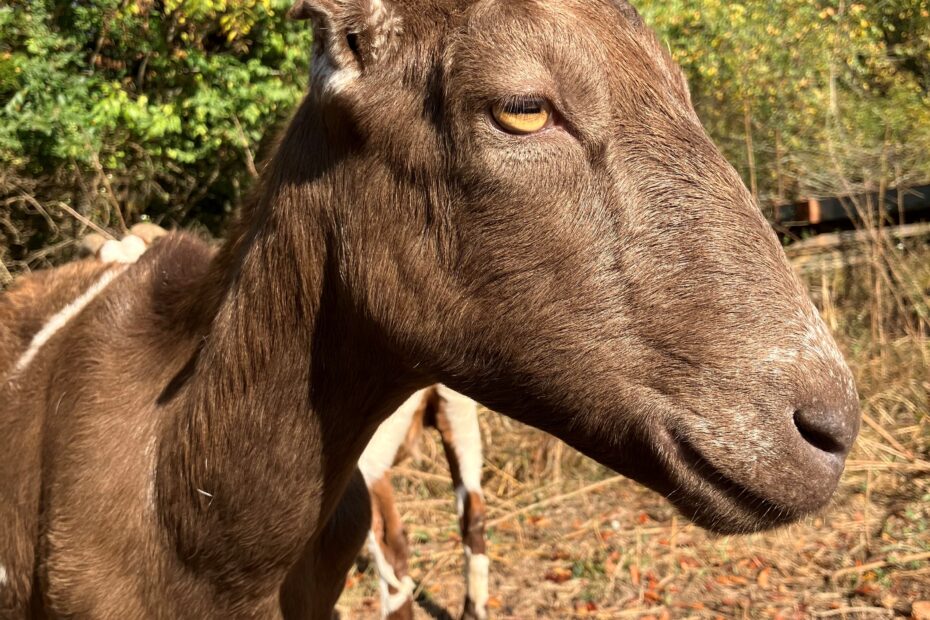I have many different breeds of goats present in the Bales Goats’ herd. They range from purebred Nubian, Boer, LaMancha, Nigerian Dwarf, Kiko, Alpine, Saanen, and everything in between with mixed breed brush goats.
My favorite of these is perhaps the most unique looking one of the bunch: The LaMancha goat.
In Herd One, there are currently four LaManchas, which makes sense given that one of those very goats is one of the first three to have joined the original herd. Over the past few years, Nanny has become one of the most recognized and most reliable herd members of Bales Goats. But, like all LaManchas, she has different facial features from the rest of the goats.
It’s all in the ears. Or rather, lack thereof.
LaMancha goats are most known for their funny looking ears, which come in two different forms. The first of these are gopher ears, which are about one inch long, present no cartilage and appear to be non-existent at first (and second, and even third) glance. Three members of our herd have gopher ears, The BG Angel, Anamchara Farm ZK Katniss, and Anamchara Farm SC Primrose.
The second breed-conforming ear type is the elf ear. Previously mentioned, The BG Nanny has this type of ear, in which the ear extends between 1-2 inches with some cartilage present to shape the ear.
Interestingly, because of their short ears, LaMancha kids can look like puppies even from a few feet away. As they get older and bigger, they appear more goat-like but retain their proportionately tiny ears.
In either case, the short LaMancha ear is sometimes a point of confusion or concern for unknowing customers. Numerous times, I have found myself explaining the history of the breed after being asked ‘Why are their ears cropped?’
In short, they aren’t cropped. It’s just the breed.
Developed in Oregon in the 20th century, it was found that the short-eared goats of the West Coast were better suited for their environment. Their descendants had been brought to the United States by Spanish missionaries in California, with speculation that they came specifically from the La Mancha region. This speculation is, however, unproven.
These displaced herds were then developed by Mrs. Eula Frey by being crossed with Nubian and Alpine goats to become solid dairy producers and for a naturally-easy-going temperment and disposition.
Even today, these are the traits that LaManchas are known for, and the reason Bales Goats is migrating its herds to be LaMancha-centric over the next few years through registered LaMancha lines, starting with Prim and Katniss.
